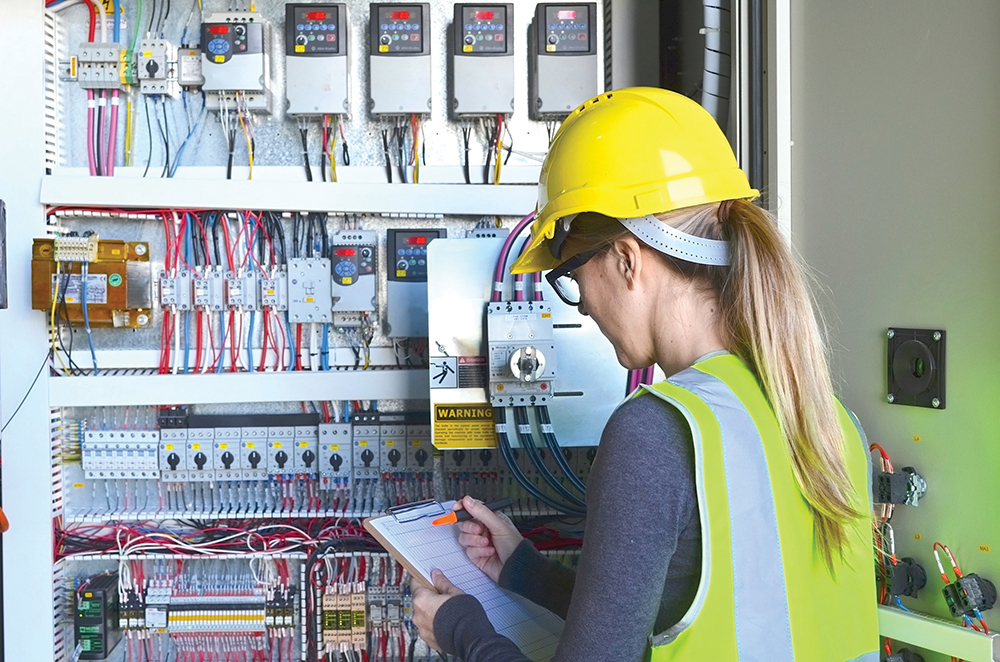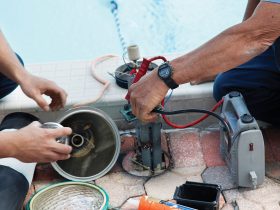Just like clockwork, the 2008 edition of the National Electrical Code is now available, which always brings a plethora of education and materials on the changes taking place in the NEC. Understanding the changes is important to electrical inspectors in order to understand the safety or enforceability enhancements that have been made to support an electrical installation.
Let’s take a brief look into the future and explore a few of the new items one will find when inspecting to the 2008 NEC.
Residential
Let’s peer into a home that has been wired in accordance with the 2008 NEC. One of the first recognizable differences will be the tamper-resistant receptacles located throughout the home. NEC 406.11 requires that all 125-V, 15- and 20-A receptacles of the home installed in accordance with NEC 210.52 be tamper-resistant. These new receptacles will provide needed protection from children inserting narrow metal objects into a single slot of the receptacle, which can create a shock or burn hazard.
Before progressing through the rest of the home, it is a good idea to proceed directly to the garage, basement or other service location to locate the load center, in order to understand if the electrical contractor has been wiring to the 2008 NEC. Upon arriving at the load center, one will notice a number of differences—a much longer panel that has more than 50 circuits installed; more AFCI circuit breakers than before with different-colored test buttons; an automatic transfer switch as part of the service panel, along with a controller that appears to automatically control loads; and finally, surge protection with a Type 2 designation. At this point, an electrical inspector might be thinking, “Is this a fancy house with all the bells and whistles or did I miss a few things during all those code education classes?”
The panel with 54 circuits is obviously the answer by the electrical equipment manufacturers to support customers with more circuits in a panel and is based on the elimination of the 42-circuit limitation in Article 408. One caution in looking at this type of installation is that the panel still has to be listed for the number of circuits installed. Read the label to make sure that the installer did not take a normal 42-circuit panel and make some tandem or ½ breakers “fit” into the existing space. The panel labeling will indicate how many circuits can be legitimately installed. Do not forget to check the listing of the cable clamps used to attach the NM cables to the enclosure; it may be that with all those additional circuits, the contractor has doubled up and even tripled up on NM cables in the cable clamps. There is a good possibility a violation exists where more than two cables are in a clamp. However, if the clamp is evaluated for more than two cables, the tripled up versions may be acceptable.
It appears the number of AFCIs have doubled in this panel as compared to a similar size home. NEC 210.12 has expanded the requirement for combination AFCIs to protect additional circuits in most of the rooms that are found in NEC 210.52(A)—those rooms that are required to have receptacle spacing around the room, along with closets and hallways. The change in test button color also is explained by the change from the branch feeder AFCI to combination AFCI. You may recall the combination AFCI requirements will go into effect January 1, 2008, based on an effective date that was in NEC-2005. The test button color is one method that manufacturers are using to support easier inspection.
The integrated automatic transfer equipment in this panelboard could raise some questions. These innovations are once again driven by a 2008 NEC change based on concerns expressed by the electrical inspection community. NEC 702.5 requires adequate capacity from the alternate source of power. The issue resides when an automatic transfer places a load on the source that it cannot support. NEC 702.5(2) has been added in order to require the generator to carry the entire load or it requires that a load management means be put in place to limit the load. The controller within this panel is likely serving the load management function to support the revised language in NEC 702.5.
There is no “TVSS” or “Surge Arrester” marking on a Type 2 surge protection device. Similar to the popular move from the terminology fixture to luminaire, the surge protection industry has revised the terms in NEC Article 285 from TVSS to SPD or surge protection device. The type rating establishes where it can be installed. Type 2 is permitted on the load side of the service disconnect, similar to TVSS. A Type 1 device would be permitted on the line side of the service disconnect similar to secondary surge arresters. Finally, a Type 3 device must have 30 feet of conductor between it and the service panel. The bottom line is that a Type 2 SPD is acceptable in this installation because it is installed on the load side of the service disconnect at the service panel.
The more an inspector looks around a home the more changes he will likely recognize. For instance, there may be no dedicated receptacle outlets for appliances in the garage or basement. These additional GFCI-protected receptacles are a result of the exceptions being removed from the NEC 210.8(A). Since the exceptions were about 20 years old, it looks like the code panel has finally eliminated them and caught this section up with the modern UL listed appliance requirements that have leakage limitation. That certainly makes the installation easier to inspect.
Moving outside, an inspector is reminded that receptacles in a damp or wet location are required to be listed as weather-resistant in accordance with NEC 406.8. If a house also has a deck on the back, an inspector will want to verify the contractor understood the new requirement in 210.52(E)(3) that there be a receptacle installed within the perimeter of the deck. This receptacle cannot be used to meet the requirements for a receptacle installed in the back of the house unless it is accessible while standing at grade level. The inspector may find a pool around back, the requirements that surround grounding, bonding and the equipotential plane are far too much to discuss in this venue. The one revision that is worth noting is that hard-wired pool pump motors are now required to be GFCI-protected in accordance withNEC680.22(B).
Commercial/industrial
There are also a number of changes in the 2008NECthat impact electrical installation in commercial and industrial buildings. For example, entering the rear of a mall, one may see a 4,000 A electrical service, with panic hardware installed on a couple of doors that are the entrances to the area where the equipment is installed, but not doors that are in the working space. NEC 110.26(C)(3) has introduced the requirement for panic hardware on doors within 25 feet of the working space.
Just across the hall is a door that leads to a janitorial closet with a sink. The sink has a disposal installed that is plugged into a receptacle under the sink.NEC210.8(B)(5) now requires GFCI protection of 125-V, 15- and 20-A receptacles within 6 feet of sink. The requirement related to outdoor receptacles in other than dwelling locations was also expanded. GFCI protection is now required for all outdoor 125-V, 15- and 20-A receptacles regardless of whether they are accessible by the public, so an inspector might find a few receptacles for holiday decorations or receptacles behind fences that have been missed by the installer regarding this requirement.
The conduit running across the roof may remind an inspector of the ampacity derating that is now required in NEC 310.15(B)(2)(c) for conduits exposed to sunlight. The derating is based on the distance of the conduit from the roof. An inspector must check conductor sizes in the air unit and understand the load placed on them to inspect for the correct wire size after derating.
In looking at the lighting panelboards, an inspector might notice that the designer utilized a number of multiwire branch circuits, using a common neutral conductor for two or sometimes three lighting circuits. NEC 210.4(B) now requires that all multiwire branch circuits have a common disconnect that will open all the ungrounded conductors of the circuit. This will mean that either two- or three-pole circuit breakers will be needed or handle ties could be used with two single-pole breakers. Also NEC 210.4(D) now requires that the multiwire branch-circuit conductors (grounded and ungrounded) be grouped in at least one location within the panelboard. This allows for easy identification of which grounded conductor goes with which ungrounded conductors. There is no wire tie or grouping means found in these panels.
Final thoughts
The 2008 NEC introduces a significant number of changes that enhance safety for property and people in both residential and commercial/industrial environments. Electrical safety is an expectation of the citizens of this country and the 2008 NEC delivers on that expectation of enhancing safety through technology and enhancements based on a better understanding from industry representatives that bring knowledge and experiences of potential hazards from electrical installations. Electrical inspectors play a key roll in developing the NEC, driving uniform enforcement and ensuring the safety of every community.














Find Us on Socials